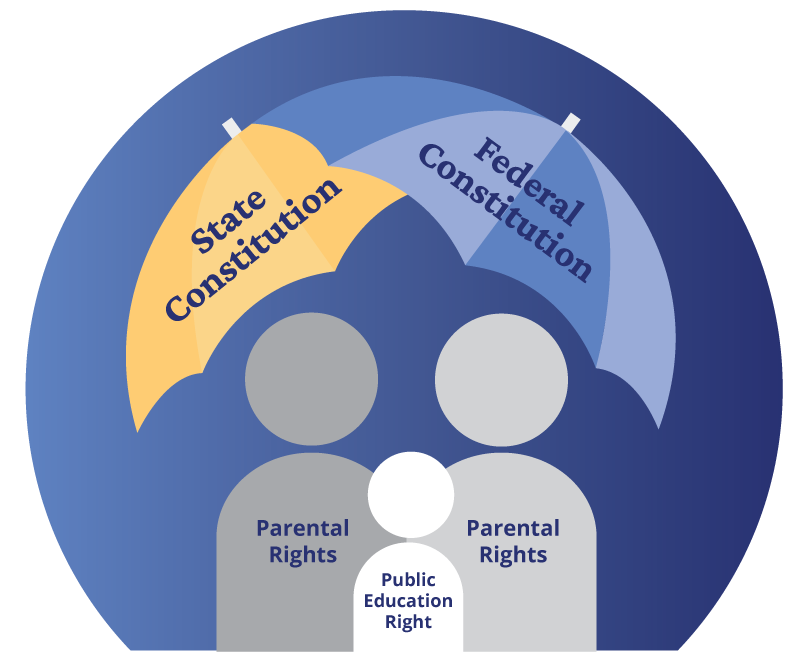Part 2
Federal and State Constitutional Rights

Each state also recognizes parental rights. In other words, you have parental rights under both your state constitution and its bill of rights, and the U.S. Constitution and its Bill of Rights.
One of the benefits of asserting your rights under your state constitution is: the state can grant greater or more rights to individuals than the rights given by the federal constitution. In other words, the Supremacy Clause establishes a “floor” or “backstop” for federal constitutional rights. U.S. CONST. art. VI, § 2. State constitutions, legislatures, and courts cannot go below the federal floor and grant fewer rights. However, the states can grant more rights. For example, the U.S. Constitution protects the free exercise of religion. Yet, many state constitutions protect religion and matters of “conscience.”3 This gives the states more latitude to address belief systems that are not traditionally viewed as religions. As you can see, state constitutions play an important role in protecting rights that are not recognized under our federal constitution.
To visualize the two layers of protections provided by the federal and state constitutions, meet the Rights family: Bill, Belinda, and Billy. The Rights are standing under two umbrellas representing the federal and state constitutions. This double-umbrella analogy works well because the courts refer to people having rights guaranteed “under” a constitution. In this context, “under” means “within the authority of” or “with the authorization of.” The top umbrella represents the rights guaranteed under the federal constitution. The lower umbrella represents the rights guaranteed under the state constitution. The laws, rules, and government actions that infringe upon or violate our rights can be challenged as “unconstitutional” under both the state and federal constitutions. The two umbrellas mostly overlap and provide two layers of protection, but only in some places. Some rights are guaranteed only under the state constitution, such as the right to an education.
To help you remember the rights commonly asserted in the school setting, Bill and Belinda have “parental rights” written on their shirts. Billy’s “public education right” is written on his shirt. Each state constitution describes the right to an education differently, using words such as “adequate,” “thorough and efficient,” “general,” “uniform,” “general and uniform,” a “general diffusion of knowledge,” and to “secure the people the advantages and opportunities of education.” Many also include the words “public” and “free.” If the Rights family lives in Georgia, Billy’s right to a public education would be defined as a “right to a free and adequate public education.” If the Rights family moves to Pennsylvania, Billy will have a “right to a thorough and efficient system of public education.” Bill, Belinda, and Billy Rights have many other shirts representing their other rights under their federal and state constitutions.
For example, the federal constitution includes both express and implied constitutional rights. The express rights are listed in the U.S. Constitution’s Bill of Rights (First through Tenth Amendments). There are additional express rights in the other amendments, such as the right to vote and the right to due process, which are specified in later amendments. (For now, we have 27 amendments to the U.S. Constitution.) The implied rights include “fundamental rights” such as the right to privacy, the right to marry, and parental rights, to name a few. For more on express and implied federal constitutional rights, including parental rights amendments, the right to free exercise of religion, the establishment clause, the right to freedom of speech, the right to not speak, and the public forum doctrine (which protects the right to speak during school board meetings and limits private speakers in public schools), see Chapter 11.
